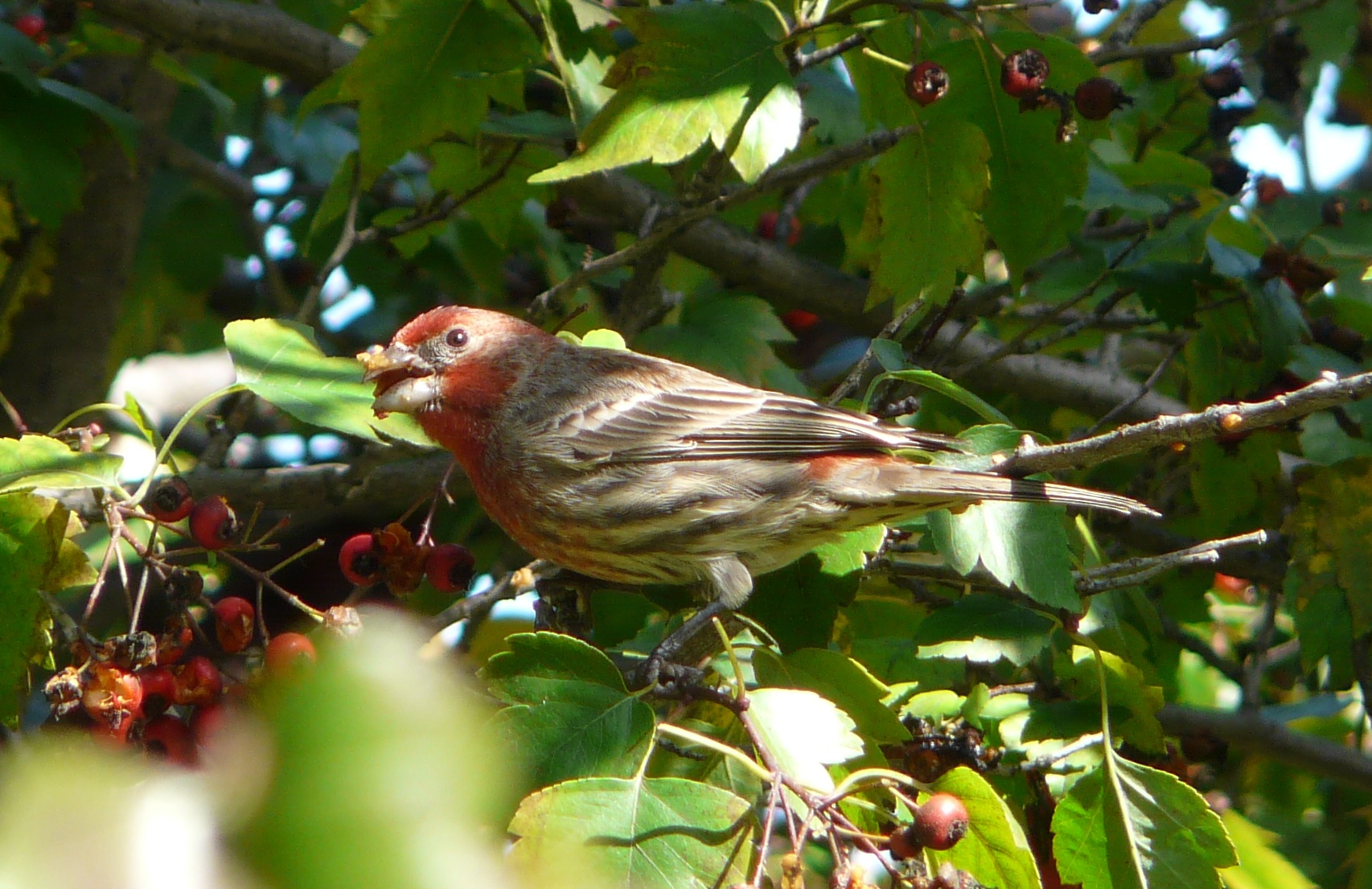Science News
Avian Clues
November 26, 2012
by Barbara Tannenbaum

When fighting disease, a bird under the weather tends to act very similar to a human battling the flu. In a recent study of house finches, Maxine Zylberberg, a postdoctoral fellow at the Academy’s Department of Ornithology & Mammalogy, observed both sick and well birds to assess their behaviors.
Researchers found that an ailing bird would hunker down on one side of its cage. It would tuck its head down, puff up its feathers, eat little or nothing, and become very inactive. And the focal individual of the study—the healthy bird—often tried to stay as far away as possible. Sound familiar?
Although other studies show that some animal species can recognize and avoid their sick fellows, Zylberberg’s research, published in the February 2013 issue of Biology Letters, is the first to describe such behavior in an avian species. It also established a link in the finches’ behavior to the relative strength or weakness of the healthy bird’s immune system.
A New York native who moved to San Francisco as a middle school student, Zylberberg visited the Academy often and eventually studied with Jack Dumbacher as a college student. She now focuses on describing and understanding the diversity of viral communities in birds and conducted the month-long study as a Ph.D. student at UC Davis in 2010.
Placing the locally caught, wild finches in groups of three, Zylberberg positioned a healthy focal individual with a sick bird on one side and another healthy bird on the other.
“The sick bird did not actually have an infectious disease,” she explains. Rather, it was merely injected with inactivated pieces of bacterial cell wall. “Its body recognized it as a pathogen and mounted an immune response. Anyone looking at the bird would say it looked sick.”
During the eight- to twelve-hour illness, Zylberberg compared behavioral differences among the sick and healthy birds and recorded the part of the cage the central, healthy individual spent its time.
“That’s when it got interesting,” she laughs. Birds who strongly invested in behavioral tricks to avoid their sick brethren had weaker immune function. Conversely, birds who socialized during the peak of another’s illness had very strong immune function.
“This is a key takeaway,” Zylberberg explains. “Scientists tend to look at behavioral defenses versus immune defenses through a separate lens. Until now, a link between the two has not been documented.”
Zylberberg believes this knowledge will help scientists fight viruses such as Avian flu or West Nile virus, or other zoonotic pathogens that jump from wild animal to human populations.
“Currently, we use mathematical models and computer simulations to predict the spread and timing of disease,” she explains. “Understanding the behavioral component of illness enables us to refine our assumptions and make better predictions.”
Barbara Tannenbaum is a science writer working with the Academy’s Digital Engagement Studio. Her work has appeared in the New York Times, San Francisco Magazine and many other publications.